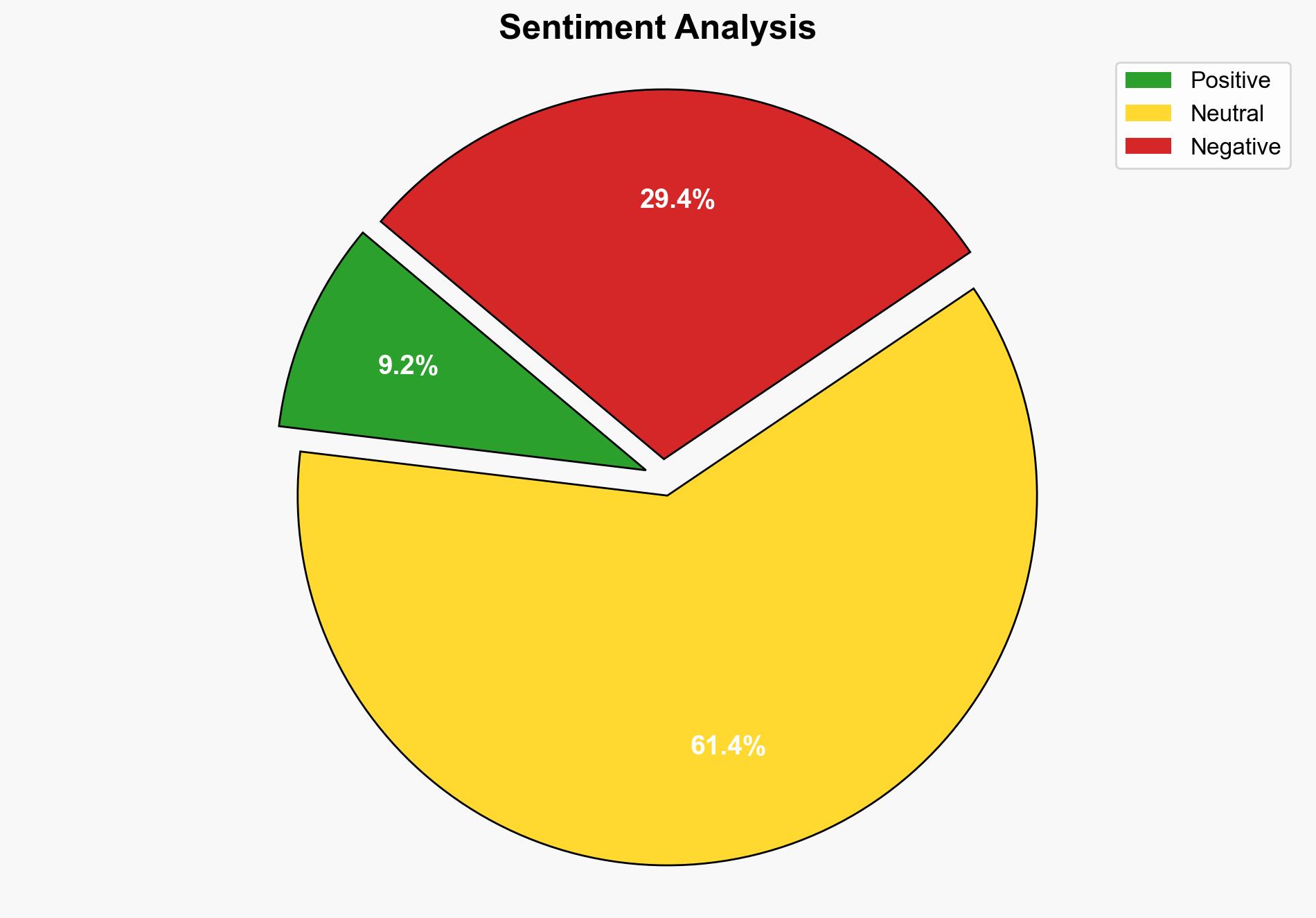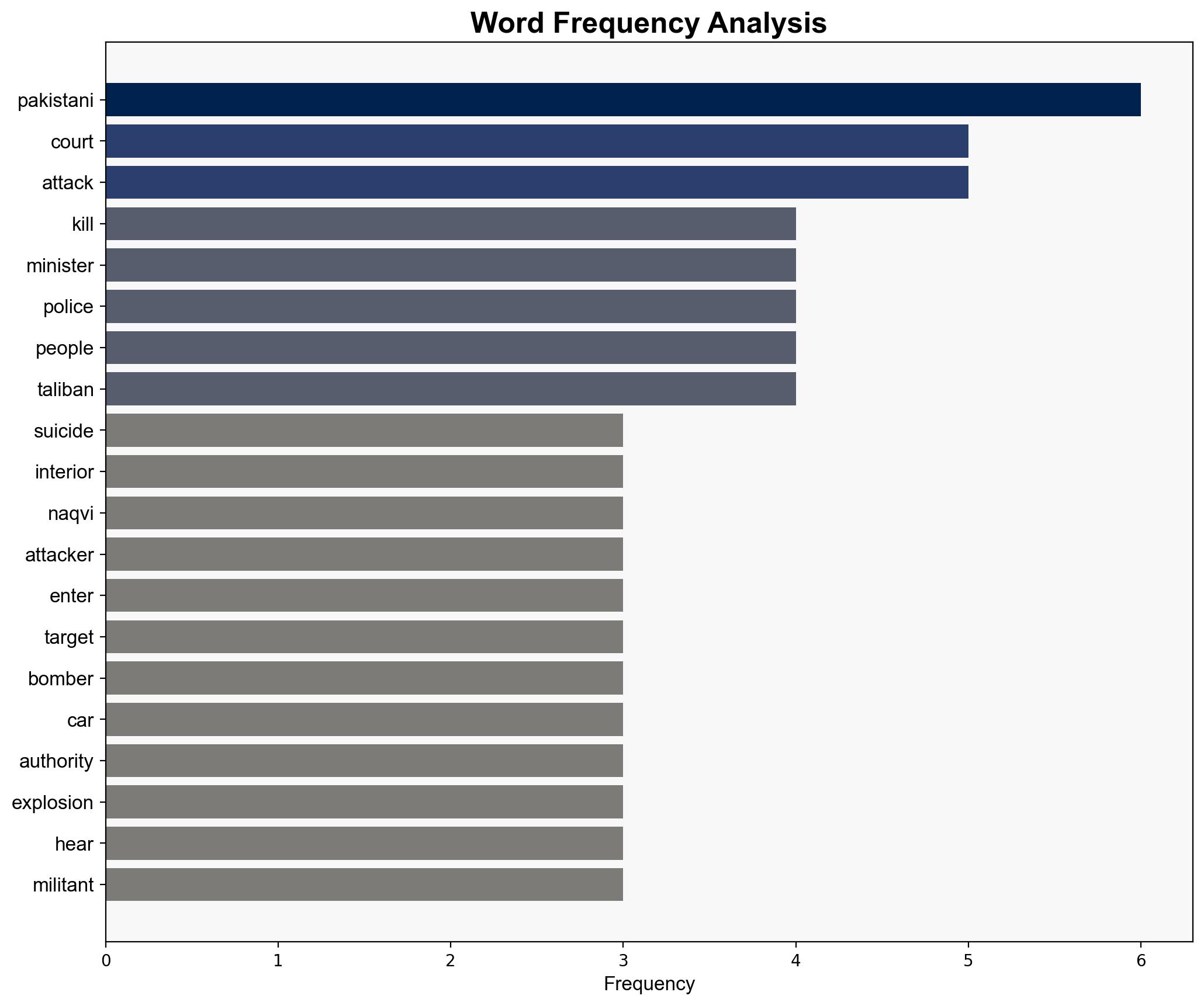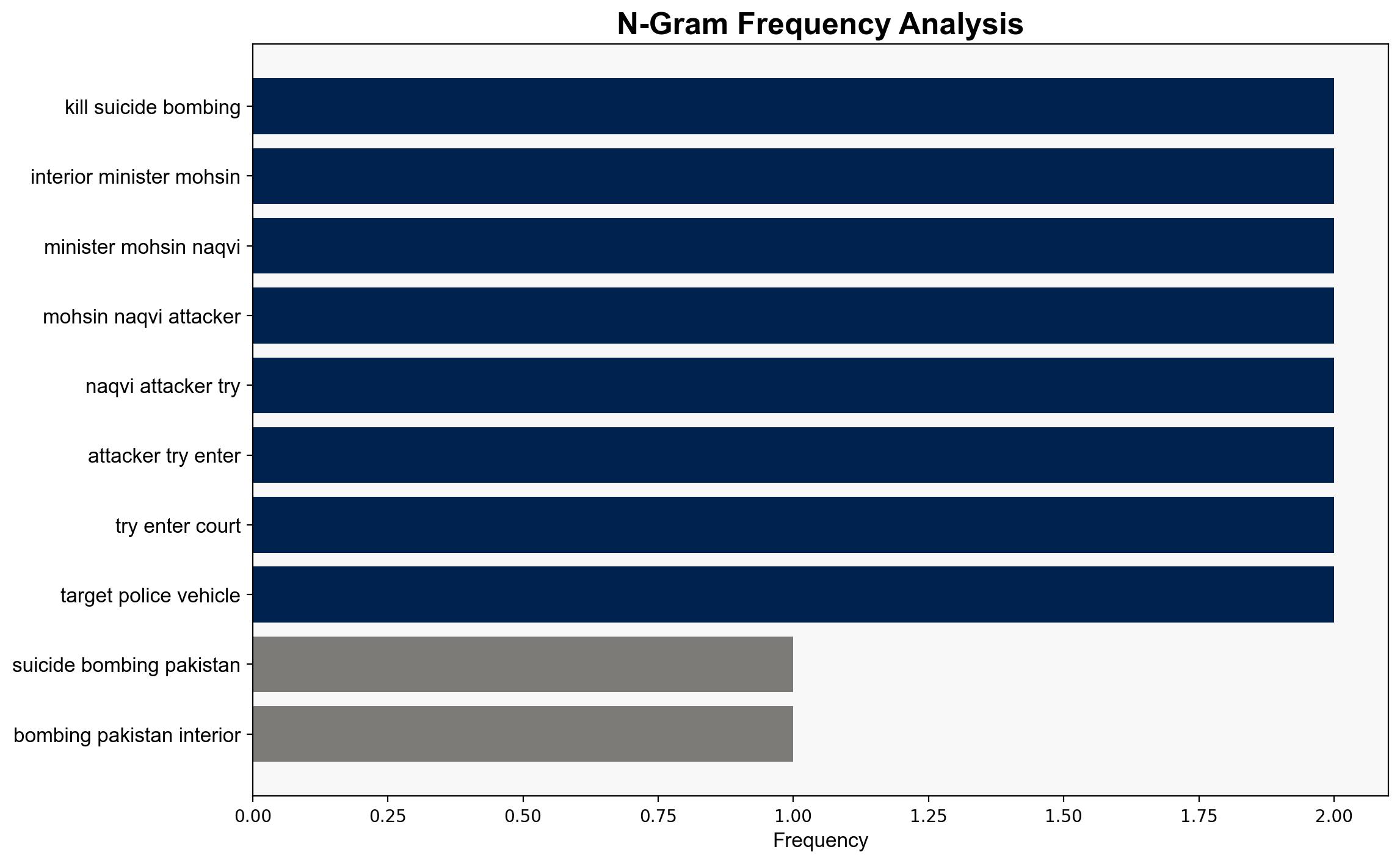At least 12 killed after suicide bombing in Pakistan – Sky.com
Published on: 2025-11-11
AI-powered OSINT brief from verified open sources. Automated NLP signal extraction with human verification. See our Methodology and Why WorldWideWatchers.
Intelligence Report: At least 12 killed after suicide bombing in Pakistan – Sky.com
1. BLUF (Bottom Line Up Front)
The most supported hypothesis is that the attack was orchestrated by the Pakistani Taliban (TTP) or an affiliated group, despite their denial of involvement. This is based on the attack’s characteristics and recent patterns of TTP activity. Confidence level: Moderate. Recommended action: Enhance intelligence sharing and coordination with regional partners to disrupt potential future attacks and strengthen security measures around high-value targets.
2. Competing Hypotheses
Hypothesis 1: The attack was conducted by the Pakistani Taliban (TTP) or an affiliated group, despite their denial. This hypothesis is supported by the attack’s location, method, and timing, which align with TTP’s historical patterns.
Hypothesis 2: The attack was carried out by a splinter group or an independent cell with similar ideological motivations but not directly linked to the TTP. This is plausible given the TTP’s denial and the possibility of fragmented groups operating independently.
Hypothesis 1 is more likely due to the TTP’s recent resurgence and history of similar attacks, despite their denial, which could be a strategic deception.
3. Key Assumptions and Red Flags
Assumptions: The Pakistani Taliban’s denial is genuine; the attack’s method indicates TTP involvement; regional instability contributes to increased militant activity.
Red Flags: TTP’s denial could be a deception tactic; potential bias in attributing blame to TTP due to historical patterns; lack of immediate claim of responsibility by other groups.
4. Implications and Strategic Risks
The attack underscores the persistent threat of terrorism in Pakistan, with potential for political destabilization and increased military operations in the region. Escalation could lead to heightened tensions with Afghanistan, especially if cross-border militant activities are implicated. There is also a risk of retaliatory attacks and increased recruitment by extremist groups.
5. Recommendations and Outlook
- Enhance intelligence sharing with Afghanistan and other regional partners to track militant movements and prevent cross-border attacks.
- Increase security measures around high-value targets and public spaces to deter future attacks.
- Engage in strategic communication to counter extremist narratives and reduce recruitment.
- Best-case scenario: Improved regional cooperation leads to successful disruption of militant networks.
- Worst-case scenario: Escalation of violence leads to broader regional instability.
- Most-likely scenario: Continued sporadic attacks with periodic escalations, requiring sustained counter-terrorism efforts.
6. Key Individuals and Entities
Mohsin Naqvi (Interior Minister), Shehbaz Sharif (Prime Minister), Alamgir Mahsud (Local Police Chief).
7. Thematic Tags
Counter-Terrorism
Structured Analytic Techniques Applied
- ACH 2.0: Reconstruct likely threat actor intentions via hypothesis testing and structured refutation.
- Indicators Development: Track radicalization signals and propaganda patterns to anticipate operational planning.
- Narrative Pattern Analysis: Analyze spread/adaptation of ideological narratives for recruitment/incitement signals.
Explore more:
Counter-Terrorism Briefs ·
Daily Summary ·
Methodology





